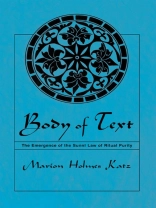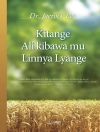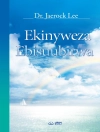Ritual purity is one of the least understood aspects of Islamic law and practice, yet it enjoys a prominent place in traditional legal texts and permeates the daily life of ordinary believers.
Body of Text examines the emergence and crystallization of the law of ritual purity, using early sources to reconstruct the formative debates among Muslim scholars. The lively interaction among legal theorizing, caliphal politics, and popular practice illustrates the formation of the law, because as scholars strove for synthesis, they advanced competing understandings of the underlying structure and meaning of ritual purity. Katz demonstrates that no single theory can adequately interpret the diversity of opinion within the tradition.
विषयसूची
Acknowledgments
Introduction
The Comprehensiveness of the Law
The Historical Background
Methodological Developments
The Case of Islamic Law
Approach to the Sources
1. Qur’anic Rules of Purity and the Covenantal Community
The Biblical Example
The Qur’anic Material: Surat al-Ma’ida
Patterns within the Qur’an
Conclusions
2. Interpreting the Qur’anic Text
The Problem
‘When You Rise to Pray’
‘Wipe Your Heads and Your Feet . . . ‘
‘If You Have Touched Women . . . ‘
Conclusion: Revealed Text and Personal Example in the Law of Purity
3. ‘Cancelers of Wudu’ and the Boundaries of the Body
Wudu from Cooked Food
Wudu from Touching the Genitals
Blood and Other Bodily Issues
Conclusions
4. Substantive Impurity and the Boundaries of Society
The Fluidity of the Law
Women, Nonbelievers, and the Dead
Children of Adam
Purity and Gender
Conclusions
Conclusion
Notes
Bibliography
Index
लेखक के बारे में
Marion Holmes Katz is Assistant Professor of Religion at Mount Holyoke College.







![का आवरण Brian Schrag & Julisa Rowe: Community Arts for God's Purposes [Chinese] 貼近神心意的社群藝術 का आवरण Brian Schrag & Julisa Rowe: Community Arts for God's Purposes [Chinese] 貼近神心意的社群藝術](https://static.worldofdigitals.com/thumb_webp/740/9781645083740.webp)




